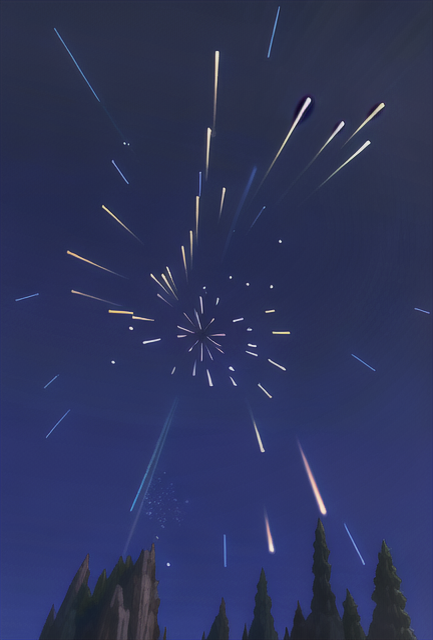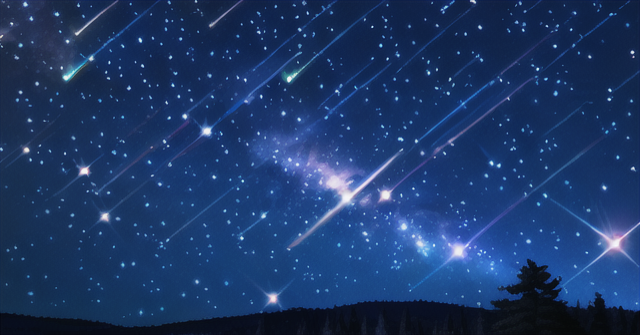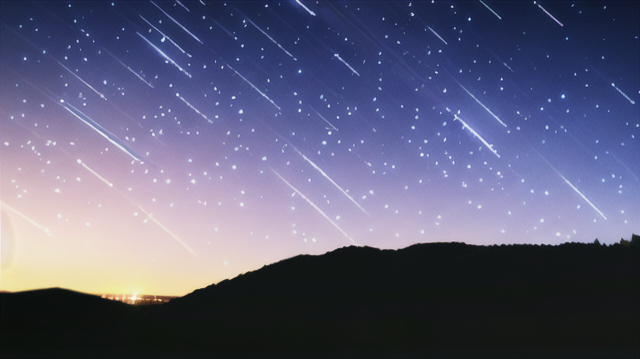Exploring the Wonders of Meteor Showers
The night sky has always held an enchanting allure for humanity, with its shimmering stars and mysterious cosmic wonders. Among the most captivating of these celestial events are meteor showers, dazzling displays of shooting stars that light up the darkness and leave us in awe of the vast universe beyond. These meteor showers, which occur sporadically throughout the year, offer us a glimpse into the dynamic interaction between our planet and the cosmos.

What is a Meteor Shower?
At its core, a meteor shower is a celestial phenomenon that occurs when Earth passes through the path of debris left behind by a comet’s journey around the Sun. Comets, often referred to as “dirty snowballs,” are composed of ice and dust. As they approach the Sun in their elliptical orbits, the Sun’s heat causes the icy materials to vaporize, releasing gas and dust particles. These particles form a trail that traces the comet’s orbit, creating a sort of cosmic breadcrumb trail.
When Earth’s orbit intersects with this debris trail, the particles encounter our planet’s atmosphere. Hurtling through space at incredible speeds, sometimes reaching tens of thousands of miles per hour, these tiny particles collide with air molecules in the atmosphere. This collision generates intense heat, causing the particles to glow and create bright streaks of light as they streak across the sky. These luminous trails are commonly known as meteors or “shooting stars.”
The Dance of Debris
Each meteor shower is associated with a specific comet, and its name usually derives from the constellation from which the meteors appear to radiate. For instance, the famous Perseid meteor shower originates from the constellation Perseus. This radiant point in the sky marks the spot from which the meteors seem to emanate, even though they can appear anywhere in the sky.
Meteor showers can vary widely in terms of the number of meteors visible per hour, known as the meteor shower’s zenithal hourly rate (ZHR). Some showers produce only a few meteors per hour, while others can showcase an impressive display of dozens or even hundreds of meteors. The Perseids, for instance, are known for their prolific nature, often producing up to 60 meteors per hour during their peak.

Spectacular Showtimes
Throughout the year, there are several meteor showers that capture the attention of stargazers and astronomy enthusiasts. The Perseids, which typically peak around mid-August, are a summertime favorite in the Northern Hemisphere. The Geminids, occurring in December, are another highlight, known for their slow-moving and bright meteors. The Orionids, associated with the debris of Halley’s Comet, grace the skies in October, while the Quadrantids kick off the new year with a January display.
To fully appreciate the beauty of a meteor shower, finding a prime viewing location is essential. Escaping the light pollution of urban areas and seeking out a dark, open sky can enhance the experience, allowing the meteors to shine more brightly against the canvas of night. Patience is also a virtue when observing meteor showers, as the meteors can appear sporadically, often in brief bursts of activity.

Scientific Significance and Space Dust
Beyond their visual spectacle, meteor showers hold scientific importance as well. Studying the composition and trajectory of meteoroids (the actual particles creating meteors) can provide insights into the nature of comets, their composition, and their history. Additionally, meteor showers provide a unique opportunity to study Earth’s upper atmosphere. The meteoroids’ interaction with the atmosphere can help scientists understand atmospheric dynamics, such as the presence of winds and turbulence.
Furthermore, the influx of space dust from meteor showers contributes to the accumulation of materials on Earth. While most meteoroids burn up completely in the atmosphere, some larger particles survive the fiery journey and reach the ground as meteorites. These meteorites are invaluable in understanding the origins of our solar system and the materials that were present during its formation.

Cultural and Mythological Significance
Meteor showers have long held cultural and mythological significance across various societies. Many ancient civilizations saw shooting stars as divine omens or messages from the gods. The Perseids, for instance, were named after Perseus, the Greek hero who slew the monster Medusa. In some cultures, meteor showers were linked to the spirits of departed ancestors, adding a spiritual dimension to these cosmic displays.
In modern times, meteor showers continue to capture the human imagination. Social media and photography have enabled people around the world to share their meteor shower experiences, fostering a sense of connection and wonder among individuals from different corners of the globe.
Final Thoughts
Meteor showers stand as a testament to the intricate interplay between Earth and the cosmos. These fleeting streaks of light remind us of our place in the universe and the dynamic dance of celestial bodies that continues to unfold beyond our blue planet. As we gaze up at the night sky, let us be reminded of the vastness and beauty of the cosmos and the wondrous phenomena, like meteor showers, that unite us in awe and curiosity.

